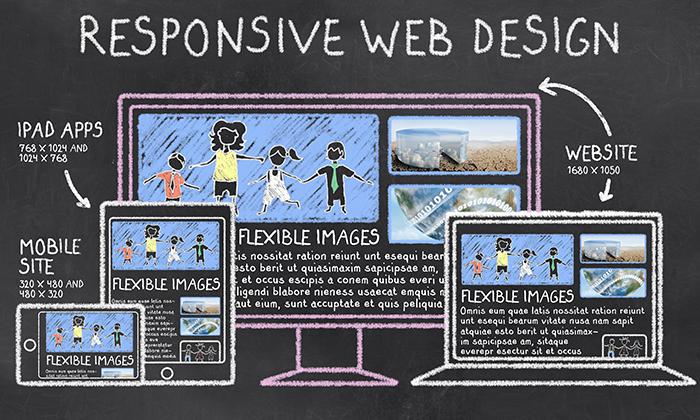List of Internet, E-commerce & Hosting statistics for 2016
Internet Stats
Fun Fact: Did you know that the internet contributes to over $2.2 trillion in annual retail sales? Or that the total number of WordPress users rivals the entire population of Turkey?
The internet has now become such a force to reckon with, responsible for trillions of dollars in direct and indirect revenue annually, and understanding how it contributes to the growing world economy will only help your business grow.
The impact of the internet will only keep increasing, but only the informed will benefit; in an attempt to keep you informed and help you make better decisions for your online business, I have compiled a list of useful internet-related statistics with the aim of providing you with the ultimate compendium of internet and hosting statistics and facts.
Internet Stats 2016
- There are 3.26 billion internet users as at December 2015; that’s over 40% of the world population. Asia, as a continent, has the most internet users. It accounts for 48.4% of global internet users.
- China, as a country, has the most internet users; with an estimated 640 million internet users, the number of internet users in China is twice the number of the entire U.S population.
- China has the highest percentage of internet users (21.97%), followed by the U.S. (9.58%) and India (8.33%).
- Bermuda has the highest internet penetration at 97.75%; a whopping 63,987 of Bermuda’s 65,461 population uses the internet.
- In contrast, while a whopping 86.75% of the U.S. population uses the internet, the U.S. is only ranked #25 in terms of internet penetration.
- The U.K. ranks #15 in terms of internet penetration with an estimated 89.90% of U.K. citizens using the internet.
- Digital interactions influenced retail sales to the tune of $2.2 trillion in 2015.
- By 2017, there will be more internet traffic than all prior internet years combined
- Wi-Fi and mobile-connected devices will generate 68% of all internet traffic by 2017.
- In 2015, 64% of all in-store sales, or sales to the tune of $2.2 trillion, were influenced by the internet.
- Facebook now has 1.55 billion active users.
- 2.9 billion Google searches are made every day.
- 2.7 million blog posts are published every day.

Domain Name Statistics 2016
- There are currently 123.78 million registered .com domain names, making the .com TLD the top domain name extension. This is followed by the .tk TLD with 27.7 million registered domain names. If you’re having a hard time coming up with a good domain name, use those domain name generators.
- The .com TLD accounts for 50% of all registered TLDs.
- As of November 2015, there are a total of 1096 TLDs.
- The most expensive domain name ever sold is Insurance.com, for $35.6 million in 2010.
Web Hosting/Website Statistics and Facts 2016
- There are currently 966 million websites in the world today.
- The highest number of websites connected to the internet was 1 billion; this happened in September 2014, but the number eventually declined and is expected to be achievable again by mid-2016.
- The world’s first website was published on August 6, 1991, by British physicists Tim Berners-Lee.
- Only 44% of web traffic is from humans; a massive 56% of web traffic is from bots, impersonators, hacking tools, scrapers, and spammers.
- 39% of web servers are hosted on Apache.
- Google is the #1 most popular website in the world, followed by Facebook and YouTube.
- The average e-commerce site takes 7.12 seconds to load in Internet Explorer 9, an average of 7.15 seconds to load in Firefox 7 and an average of 7.5 seconds to load in Google Chrome.
- Google uses site speed as a ranking factor. Here you can find the best web hosting companies.
- The most popular CMS is WordPress, powering 25.4% of all websites in the world and responsible for over 76.5 million blogs created since 2004.
- An estimated 37,000 websites are hacked every day. Here’s a primer on how you can secure WordPress.

E-commerce and Conversion Statistics 2016
- 40% of global internet users, or more than 1 billion people, have bought products or goods online.
- The U.S. e-commerce economy is worth $349 billion while China’s e-commerce economy is worth $562.66 billion.
- A single second delay in your website loading time can result in a 7% loss in conversion, and 40% of web users will abandon a website if it takes longer than 3 seconds to load.
- Slow-loading websites cost the U.S. e-commerce market more than $500 billion annually. To avoid that, go and find yourself a reliable host from those web hosting reviews.
- Online retail sales in the U.K. reached an estimated £52.25 billion in 2015, with the average shopper spending £1,174.
- Worldwide B2C e-commerce sales reached $1.7 trillion in 2015, and it is estimated to reach $2.35 trillion by 2018.
- 8 out of 10 consumers will shop online if offered free shipping.
- Personalized recommendations can increase conversion rates by up to 5.5 times.
- 51% of U.S. online shoppers cite slow site loading times as the top reason they abandon a purchase.
- 34% of British consumers cite a store’s reputable brand name for being their reason for shopping with a brand, while 38% cite social media interaction as their reason for visiting a retailer’s website.
- 40% of shoppers consult 3 or more channels, often in the process of shopping, before making a purchase; that’s a massive increase from 10% in 2002, and it goes to show the increasing importance of having an online presence in as many places as possible.
- While mobile internet usage is high, desktop and tablet internet usage still leads for conversions; an estimated 8.52% of desktop users add to cart and an estimated 2.78% convert to sales. This is much higher than Smartphone conversion rates with an estimated 4.70% add to cart rate and an estimated 0.80% sales conversion rate. The number is much higher when you consider conversion rates from tablets and other mobile devices, but desktop still leads when it comes to actual sales.
- An increase in site speed from 8 to 2 seconds can boost your conversion rate by 74% (this is based on data monitoring real user activity from 33 major retailers).
- Increasingly shrinking attention span keeps influencing e-commerce; in 2010, a page that took 6 seconds to load suffered a 40% loss in conversion. Today, a page that takes 6 seconds to load will experience a 50% loss in conversion.
- The abandonment rate for the mobile shopping cart is higher (at 97%) than that of desktop shopping carts (at 70 – 75%).
- E-commerce sales from social media grew by 202% in 2014 and is expected to further increase.
- The average human attention span has declined from 12 seconds in the year 2000 to 8 seconds now. This is much shorter than the attention span of a goldfish (at 9 seconds). This was revealed by a recent study by Microsoft Corp. that surveyed 2,000 people and monitored the brain activity of 112 others using electroencephalograms (EEGs).

Mobile Internet Stats and Facts 2016
- There are more mobile internet users than desktop internet users; 52.7% of global internet users access the internet via mobile, and 75.1% of U.S. internet users access the internet via mobile.
- Mobile media time in the U.S. has exceeded desktop, with mobile media time estimated to be 51% while desktop media time is estimated to be 42%.
- While there are more mobile users than desktop users, mobile advertising spend is still slightly lower than desktop advertising spend; mobile advertising spends currently represents 49% of digital advertising spend, compared to desktop at 51%.
- Mobile advertising spend is projected to account for 60.4% of all digital advertising spend by 2016 and 72.2% of all digital advertising spend by 2019.
- In 2015, mobile-influenced retail sales to the tune of over $1 trillion.
- Search engines are the starting point for mobile research, with an estimated 48% of mobile internet users starting their search on search engines.
- Consequently, the #1 search engine, Google started to significantly use mobile compatibility as a factor when ranking websites.
- B2C mobile commerce sales in the U.S. is valued at an estimated $83.93 billion.
- 4 out of 5 consumers use a Smartphone to shop.
- 70% of mobile searches result in an online action within an hour of the search being conducted.
- 50% of mobile users will abandon of web page if it takes more than 10 seconds to load, and 60% won’t return to the site.

Special Thanks to the Guest Author of this post:
Toby Dean works on behalf of Hosting Facts in content creation and marketing. He creates engaging graphics and content that help businesses stand out from the crowd. Over the past 7 years has worked with dozens of SME’s in both an agency and freelance capacity.
Resources & statistics used in this post:
- https://www.infodocket.com/2013/05/30/cisco-releases-latest-internet-usage-and-data-forecast-nearly-half-the-worlds-population-will-be-connected-to-the-internet-by-2017
- https://www2.deloitte.com/us/en/pages/consumer-business/articles/navigating-the-new-digital-divide-retail.html
- https://www.smartinsights.com/mobile-marketing/mobile-marketing-analytics/mobile-marketing-statistics/
- https://www.statista.com/topics/779/mobile-internet/
- https://www.convinceandconvert.com/mobile/7-mobile-marketing-stats-that-will-blow-your-mind/
- https://www.internetlivestats.com/total-number-of-websites/
- https://www.speedawarenessmonth.com/slow-websites-cost-the-us-ecommerce-market-504-billion-in-2011/
- https://econsultancy.com/site-speed-case-studies-tips-and-tools-for-improving-your-conversion-rate/
- https://econsultancy.com/11-staggering-stats-from-around-the-digital-world/
- https://research.domaintools.com/statistics/tld-counts/
- https://w3techs.com/technologies/overview/top_level_domain
- https://en.wikipedia.org/wiki/List_of_most_expensive_domain_names
- https://www.internetlivestats.com/
- https://www.statista.com/statistics/261245/b2c-e-commerce-sales-worldwide/
- https://www.statista.com/markets/413/e-commerce/
- https://www.remarkety.com/global-ecommerce-sales-trends-and-statistics-2015
- https://en.wikipedia.org/wiki/List_of_Internet_top-level_domains
Save
Save
Save

Matthew is the President of Infront Webworks and is a New England native now calling Colorado Springs home. Matt attended The University of NH where he pursued a BS in Natural Resource Economics & Business Administration. Aside from Infront; Matthew has owned and managed two other online agencies based on the seacoast of New Hampshire and been a key player in multiple technology mergers & acquisitions. When he’s not bathing in technology, online marketing & business; he’s probably spending time with his wife and daughter, boating, skiing the trees, hiking or cooking..he is a foodie for sure!



